Myogenic Trismus Home Care Instructions
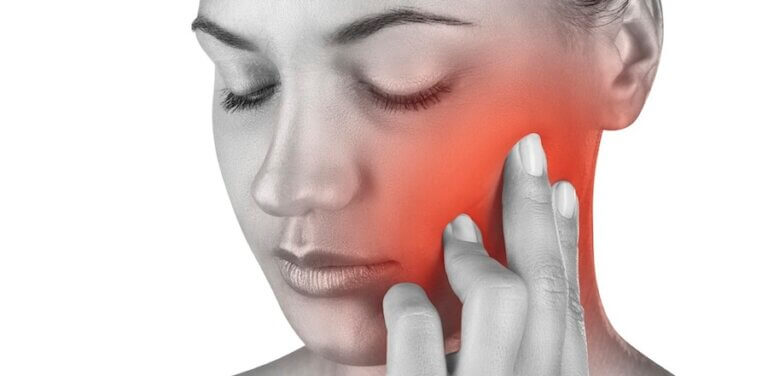
What Is Trismus?
Trismus, also known as “lockjaw,” occurs when the jaw muscles become so tight that it limits mouth opening. Normally, the mouth opens 40-60 millimeters (the width of about three fingers). If you experience trismus, your jaw opening may be restricted to just 20-35 millimeters (or just one finger width).
One common cause is myogenic trismus secondary to dental local anesthesia, where a local anesthetic injection causes muscle injury, inflammation, and spasms. This condition is typically temporary and manageable with appropriate care, including medication and physical therapy.
Before seeking professional help from your dentist, there are some thing you should know as a patient:
- Normal Jaw Function
- Causes of Myogenic Trismus
- Signs And Symptoms of Trismus
- Diagnosis of Trismus
- Treatment of Trismus
- Prognosis of Trismus
- Frequently Asked Questions About Myogenic Trismus
If you have further questions and concerns about trismus, please contact us.
Normal Jaw Function
Your jaw’s ability to move relies on the coordination of bones, joints, and muscles:
- Maxilla: Upper jawbone.
- Mandible: Lower jawbone.
- Temporomandibular Joint (TMJ): Connects the mandible to the skull.
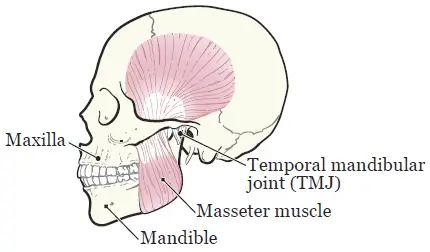
The muscles involved in chewing and opening the mouth include the masseter, temporalis, lateral pterygoid, and medial pterygoid. Trismus disrupts their function, making simple tasks like eating or speaking challenging.
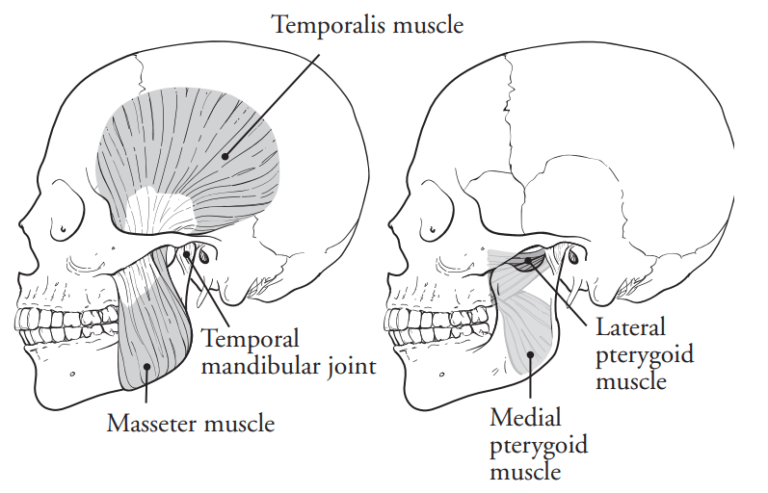
Causes Of Myogenic Trismus
Trismus has various underlying causes. Specific to myogenic trismus secondary to dental anesthesia, causes include:
- Traumatic Injury: Needle injury to jaw muscles during a dental procedure.
- Inflammation: Localized swelling and irritation of jaw muscles.
- Muscle Spasms: Prolonged tightening of the jaw muscles after injury.
- Infections: Conditions like mumps, tonsillitis, or dental infections.
- Inflammatory Disorders: Rheumatoid arthritis or osteoarthritis.
In the context of trismus occurring immediately after a dental appointment with local anesthesia, the trismus is caused by traumatic injury, inflammation and spasming of the muscles of mastication.
Signs And Symptoms Of Myogenic Trismus
Key indicators of trismus include:
- Restricted Jaw Opening: Reduced mouth opening (less than 40 mm).
- Pain: Jaw discomfort, particularly when chewing, speaking, or yawning.
- Jaw Deviation: The jaw may shift to one side when opening.
- Difficulty Eating: Inability to chew solid foods or maintain oral hygiene.
In severe cases, infections may cause additional symptoms like swelling, fever, or abscess formation.
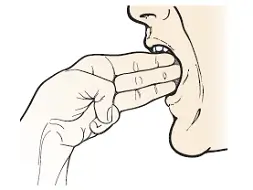
Diagnosis Of Myogenic Trismus
Your dentist or healthcare provider will diagnose trismus based on:
- Symptom Assessment: Reporting difficulty in opening the mouth and associated pain.
- Physical Examination: Checking jaw movement and muscle function.
- Imaging Tests: CT or MRI scans to rule out structural abnormalities, if needed.
For trismus following dental procedures, a diagnosis of myogenic trismus secondary to dental local anesthesia is typically straightforward.
Treatment Of Myogenic Trismus
Myogenic trismus secondary to dental local anesthesia is treated with medications and physical therapy:
Medications
- Robax Platinum (Methocarbamol + Ibuprofen): Reduces pain and muscle spasms.
- Pain Relievers: Ibuprofen (Advil) or Acetaminophen (Tylenol) are available over the counter and do not require a prescription from your doctor. Use 600 mg ibuprofen and 1000 mg acetaminophen every 4-6 hours as directed by your dentist.
Active range of motion and stretching exercises
Perform these exercises 2-3 times daily:
- Open your mouth as wide as possible without pain. Hold for 10 seconds and repeat 5 times.
- Move your lower jaw to the left and right, holding each stretch for 3 seconds. Repeat 5 times.
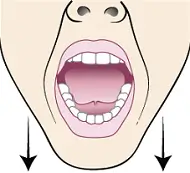
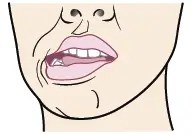
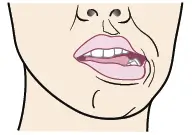
Passive stretching exercise
Perform these exercises 2-3 times daily:
- Use your fingers (thumb under upper teeth, index finger under lower teeth) to gently stretch your mouth open. Hold for 5-10 seconds. Repeat 5 times.
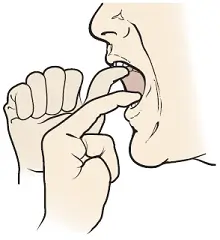
Additional Home Care
- Heat Therapy: Apply a moist, warm towel to your jaw for 15-20 minutes hourly to relax muscles.
- Soft Diet: Stick to soft foods like soups, smoothies, or yogurt to reduce strain.
- Jaw Rest: Avoid habits like chewing gum or nail-biting.
Professional Support
For persistent trismus, consult a physiotherapist to strengthen jaw muscles and improve mobility.
Prognosis Of Myogenic Trismus
With timely treatment, myogenic trismus secondary to dental anesthesia typically resolves within 4-6 weeks. Delayed treatment may prolong symptoms or risk permanent jaw dysfunction.
Frequently Asked Questions About Myogenic Trismus
- Is trismus permanent?
Most cases, especially myogenic trismus after dental anesthesia, are temporary and resolve within weeks with proper care. Severe or untreated cases may lead to long-term complications.
- Can trismus be prevented?
While it’s difficult to entirely prevent trismus from dental procedures, maintaining good oral health and discussing concerns with your dentist can reduce risks.
- What foods can I eat with trismus?
Soft foods like mashed potatoes, yogurt, soups, and protein shakes are ideal. Avoid hard, crunchy, or chewy foods that strain the jaw.
- When should I see a doctor for trismus?
If symptoms persist beyond a few weeks, worsen, or are accompanied by swelling, fever, or severe pain, seek medical attention promptly.
If you’re experiencing jaw discomfort or difficulty opening your mouth, don’t hesitate to contact us. We’re here to provide expert advice and personalized care.

